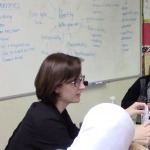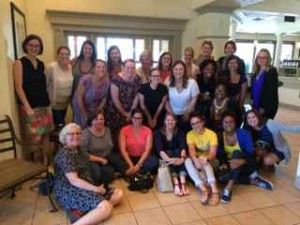I explore how educators can learn about students’ aspirations and funds of strategies, develop responsive teaching and scaffolding skills, and cultivate spaces where learners can support one another’s growth. These 3 principles, which are driven by my aim to increase equity in education for multilingual learners, inform my everyday teaching, research, and service.
In the Department of Teaching and Learning, I support the preparation of future educators, researchers, and leaders in language and literacy education. I teach classes on curriculum design and language teaching methods, scholarly writing and thinking, and sociocultural foundations of multilingual education. I direct the Multilingual Learner Education M.Ed. program, the undergraduate major in Second Language Studies, and the minor in Multilingual Learner Education.
In my writing, three overlapping research strands help me achieve this goal. Full-text publications are posted under the “publications” section, at journal websites, at RG, or Google Scholar.
Responsive Pedagogies for Multilingual Literacy Learning
I focus on how multilingual youth mediate learning for one another and how educators notice this mediation and responsively scaffold learning tasks for the students in their classrooms. A related effort is helping youth to recognize their own resources and use these strategically to develop their (and their peers’) skills. My teaching and research are guided by the question: How can we (as educators) reveal and unpack these resources – especially the organic, strategic learning learners do – and leverage their practices more in our instruction?
Teacher Learning regarding the Effective Education of Multilingual Students
Born out of my former experience as an English as a Second Language (ESL) teacher, I examine how elementary and secondary teachers develop knowledge, skills, and dispositions to educate multilingual students. My teaching and research are guided by the question: How can teacher educators design learning environments, collaborations, and tasks to optimize teacher preparation? How do experienced teachers who are novices at educating multilingual learners develop their instruction to support all learners in their classrooms?
More recently, I wonder: How can our work in universities support learning that can support undergraduate and professional students engage in both self-cultivation and transformative learning?
Factors Impacting Teachers’ Instruction with Multilingual Students (beyond classroom interactions)
As we work with teachers and their students, my colleagues and I recognize that factors beyond classroom interactions impact learning and teaching. Such factors include communication between families and teachers, school environments, and educational policies. How do teachers navigate multiple systems and collaborate with others as they strive to educate equitably?




